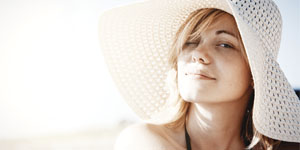Health
3 min Read
Become a Skin Checker and help protect your friends and family from skin cancer

May 2, 2016
Health
3 min Read

May 2, 2016

Did you know that skin cancer is the most common cancer in Canada? It is also one of the most preventable types of cancer. The main risk factor for all types of skin cancer is exposure to ultraviolet (UV) radiation. Unfortunately, not enough Canadians are protecting themselves from the sun, and the incidence of skin cancer continues to rise. Early diagnosis is critical, as most skin cancers are curable when diagnosed and treated at an early stage. Here’s where you come in – make a commitment to sun safety this summer and check your skin once a month throughout the year for any concerning or changing lesions. Become a Skin Checker!
Last year, La Roche-Posay launched its Become a Skin Checker campaign, which aims to spread awareness of the importance of regular self skin examinations. The program is continuing in 2016.
You can learn how to evaluate your moles and those of your loved ones by becoming a Skin Checker and learning the ABCDEs of mole evaluation. Each letter corresponds to a feature of your moles that you should assess:
If you are concerned about any of your moles, you should seek referral to a dermatologist for further evaluation. As part of the Become a Skin Checker program, La Roche-Posay is offering 50 skin-checking clinics across the country from mid-June through the end of July. If you don’t have a regular dermatologist, you can sign up for an appointment starting May 15 by visiting: https://skinchecker.ca.
Make a commitment to sun protection this summer by:
There are special considerations for sun protection in infants and children:
Dr. Sonya Cook is the Cofounder of Compass Dermatology in Toronto.